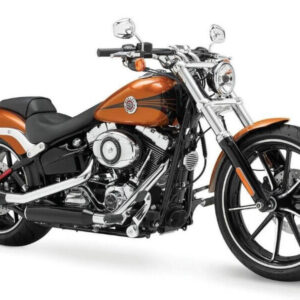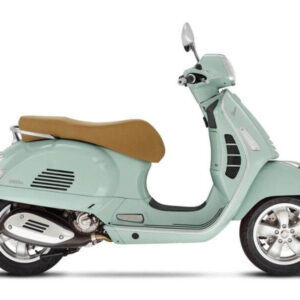How often do oil changes for motorcycles? Not sure how often to change your motorcycle oil? Learn the answer to that question, along with the right oil to use and why it’s so important.
Replacing your motorcycle’s engine oil is one of the most essential motorcycle maintenance procedures you can perform. As important as changing your car’s oil, changing your motorcycle’s oil at regular intervals is even more consequential.
Your motorcycle’s oil serves several functions. Failing to properly maintain it can lead to engine and transmission damage, impaired performance and reduced fuel economy. Read on to discover all the reasons you should take your bike’s engine oil health seriously, what type of oil to use and how often to replace it.
How often do oil changes for motorcycles?
Motorcycle oil change intervals are influenced by a number of variables, including the type of oil used, the riding environment, and the motorcycle’s age and mileage.
- Mineral oil should be replaced at least once a year or every 2,000 to 3,000 miles, depending on the type of oil. While fully synthetic oil only needs to be changed every 7,000 to 10,000 miles, semi-synthetic oil should be changed every 5,000 to 6,000 miles.
- Riding environment: You may need to change your oil more frequently if you ride in dusty or unclean circumstances. This is due to the possibility of the dust and grime contaminating the oil and reducing its shelf life.
- Age and mileage: Oil changes may be required more frequently on older motorcycles and motorcycles with heavy mileage. This is due to the possibility that the engine’s seals and gaskets will begin to leak, causing the oil to get contaminated.
To find out how frequently you should replace your motorcycle’s oil, it is preferable to refer to the owner’s manual for that particular motorcycle.
Here are some other considerations regarding motorcycle oil changes:
- Use the appropriate motorbike-specific oil. The recommended type of oil for your motorcycle is detailed in the owner’s manual.
- Every time you change the oil, replace the oil filter as well. Regular oil filter replacement is crucial since it helps to eliminate impurities from the oil.
- Cleanly dispose of the used oil and filter. The environment can be harmed by used oil and filters, so it’s crucial to properly dispose of them.
You can make your motorcycle’s engine perform smoothly and last longer by paying attention to these pointers.
Here are some further suggestions for avoiding motorbike engine issues:
- Use the right oil and filter for the job.
- Regularly replace the oil and filter.
- Regularly check the engine for leaks.
- Keep the engine clear of debris and clean.
- Use the suggested RPM range for the engine.
You can help maintain the health and avoid issues with the engine of your motorcycle by paying attention to the advice provided below.

Why Motorcycle Oil Matters
Engine oil lubricates the moving parts while protecting the engine from the corrosive nature of moisture, combustion by-products and contaminants with various additives. In contrast to cars, most motorcycles also use the oil as an engine coolant, unless the motorcycle is specifically “liquid-cooled.” Oil is also used to keep a motorcycle’s transmission cooled and lubricated in place of the automatic transmission fluid used in cars.
Unfortunately, the oil’s lubrication qualities and protective additives eventually break down while contaminants and moisture accumulate. That’s why it’s essential to maintain the integrity of your motorcycle oil by changing it at regular intervals, and by using the right type of oil.
What are the different types of Motorcycle Oil?
- Mineral. Also called “conventional,” mineral oil is a petroleum product made from refined crude oil. That’s a form of “fossil fuel” formed by the underground decomposition of dead organisms. Although it’s the cheapest to buy and acts as an effective lubricant, it contains a certain amount of impurities left over from the crude oil it’s derived from. As a result, it breaks down quicker and requires more frequent replacement than synthetic oils.
- Synthetic. These oils are produced from chemically modified petrochemicals instead of raw crude oil. They undergo a complex production process to create the exact chemical composition needed for optimal engine lubrication, while simultaneously filtering out the various impurities mineral oils contain. Synthetic oils offer greater engine protection and don’t break down as quickly as mineral oils, but they’re much more expensive.
- Semi-synthetic. These are a mixture of mineral and synthetic oils, containing between five and 30 percent synthetic. Being a hybrid, semi-synthetic oils offer an excellent compromise between the longevity and protection of synthetic oils with the affordability of mineral oils.

How to choose the Best Motorcycle Oil for Your Bike
Because motorcycle engine oil serves more purposes than car engine oil, there are some special considerations to keep in mind when selecting the best oil for your bike. Your motorcycle’s user manual will tell you the type recommended by the manufacturer, and should include:
- Whether mineral or synthetic oil is required.
- The viscosity grade or “weight,” with 10W-40 the most common.
- The American Petroleum Institute (API) classification, a two-letter code ranging from SA through SN that indicates the lubrication and additive properties of the oil. The API, and most motorcycle manufacturers, recommend an oil with a rating of SG.
- The Japanese Automotive Standards Organization (JASO) classification. This two-letter code indicates the qualities of the friction modifiers that can influence clutch performance. Most motorcycles use a manual transmission with an oil-lubricated (“wet”) clutch and should use an oil with a JASCO rating of MA. However, motorcycles with an automatic transmission should use an oil with the JASCO rating MB.
It’s always advisable to defer to your motorcycle’s user manual for the specific oil to choose, along with the recommended oil change intervals.
How often does Motorcycle Oil need to be changed?
How often you change your motorcycle oil will depend on the type of oil it uses, the number of miles and frequency it’s driven. Your user manual will provide the recommended service intervals, but as a general rule:
- Mineral oil should be replaced every 2,000 to 3,000 miles, or at least once a year. Some experts may recommend a minimum of twice a year.
- Synthetic oil should be replaced every 7,000 to 10,000 miles, or at least once a year.
- Semi-synthetic oil should be replaced every 5,000 to 6,000 miles, or at least once a year.
- Surprisingly, you may need to replace your oil at more regular intervals if you don’t ride your motorcycle frequently, or if you typically take short trips under 30 minutes. This is because an engine needs to be regularly driven (not just idling) for around 30 minutes to burn off any moisture that has accumulated in the oil. This excess moisture can lead to accelerated oil degradation and engine corrosion.
If you can’t ride your motorcycle for 30 minutes every one to two weeks, as happens during the winter, it’s recommended to replace your oil every four months.

Above is information about How often do oil changes for motorcycles? What is it like?. Hopefully, through the above content, you have a more detailed understanding of oil changes for motorcycles. Thank you for reading our post.









